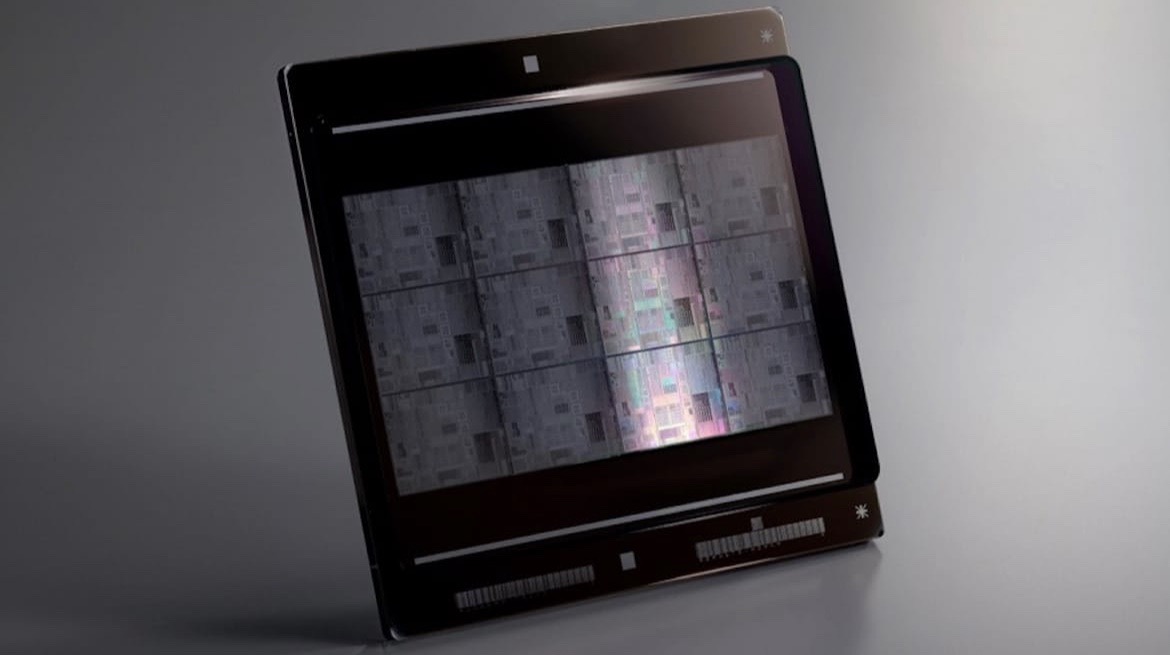Photomasks are essential for semiconductor manufacturing

Semiconductor material manufacturers are embarking on investment to increase production. Toppan Printing will invest about 20 billion yen through its subsidiary by fiscal 2023 to strengthen production facilities for glass sheets used in semiconductor manufacturing. The Mitsubishi Chemical Group has set up production facilities in Taiwan for high-purity sulfuric acid, which is used to clean semiconductors. Material companies will continue to invest aggressively in anticipation of robust demand in the medium to long term.
Toppan Photomask, a subsidiary of Toppan Co., Ltd. (Minato, Tokyo) handles a photomask, which is a glass plate with a fine circuit pattern formed on its surface. It plays the role of printing the circuit onto the silicon wafer. It supplies to major semiconductor manufacturers in the United States and Taiwan.
Toppan Photomask will reinforce and renew production facilities at its plants in Niiza City, Saitama Prefecture and Taiwan. For logic semiconductors, the circuit line width is 5 to 10 nanometers (a nano is one billionth), and for DRAM, the production lines for cutting-edge products with a width of 10 nanometers will be increased. The production capacity of photomasks for semiconductors finer than 40 nanometers will be increased by about 20% from the fiscal 2020 level.
Approximately 10 billion yen was invested in fiscal 2021. The company will also increase lines for EUV (extreme ultraviolet) exposure equipment, which is necessary for manufacturing cutting-edge semiconductors. According to the company, demand for logic semiconductors, etc. is expected to grow in the medium to long term, although it would not be surprising if there were moves to eliminate the excess in the short term.
Against the backdrop of increased communication speeds and increased data volumes, the supply and demand for semiconductors has become tight around the world. According to world semiconductor market statistics, the global semiconductor market in 2021 was over 70 trillion yen, up 26% from 2020.
The semiconductor industry has experienced a ``silicon cycle'' that repeats booms and busts in cycles of three to four years. The global market in 2019 slowed down by 12% compared to 2018, but returned to a growth trajectory in 2020 with an increase of 7% compared to 2019. Material manufacturers, which had restrained investment due to fear of a recession, have turned to aggressive investment as their production could not keep up with the rapid increase in demand in 2021.
Dai Nippon Printing Co., Ltd. (DNP), which handles photomasks, will invest nearly 10 billion yen by fiscal 2023 to increase production lines at factories in Japan, China and Taiwan. ADEKA, a medium-sized chemical manufacturer, will build a new building at its South Korean factory that handles advanced materials used in semiconductors, "high dielectric materials," and more than double its production capacity.
In 2022, many material manufacturers have started full-scale production increases. The Mitsubishi Chemical Group invested billions of yen in a plant in Taiwan this spring to increase its high-purity sulfuric acid production capacity by 1.5 times. Tokuyama is operating a new plant in Taiwan that produces high-purity alcohol, which is used as a cleaning liquid in the semiconductor manufacturing process.
Currently, sales of smartphones and personal computers are slowing against the backdrop of inflation, and semiconductor demand is entering an adjustment phase. At the end of July, Gartner lowered its forecast for the semiconductor market in 2022 to 7.4% (previously 13.6%).
On the other hand, tight supply and demand for semiconductors for automobiles and data centers continues. In the medium to long term, there is a strong possibility that inquiries for semiconductors, which are also used in digital transformation (DX), will increase.
The Semiconductor Equipment Association of Japan (SEAJ) expects that sales of Japanese-made semiconductor manufacturing equipment in FY2022 will increase by 17% from FY2021 to 4,028.3 billion yen. It has been revised upward by 478.3 billion yen from the forecast as of January this year. Active investment continues in the upstream of the supply chain (supply network).
At home and abroad, there is a growing movement to attract semiconductor factories. In the United States, a bill was enacted to strategically boost the semiconductor industry with subsidies. In Japan, Taiwan Semiconductor Manufacturing Co., Ltd. (TSMC), Sony Group, and Denso have approved plans for a semiconductor factory under construction in Kumamoto Prefecture.
Competition among nations is the prime mover for new factories, and the tailwind is also reaching material manufacturers. Japanese manufacturers have strengths in materials, and Toppan Photomask is believed to have the world's top share in the outsourced manufacturing market. Each company is required to have the tenacity to maintain competitiveness by investing in increased production in response to changes in market conditions and supply networks.






